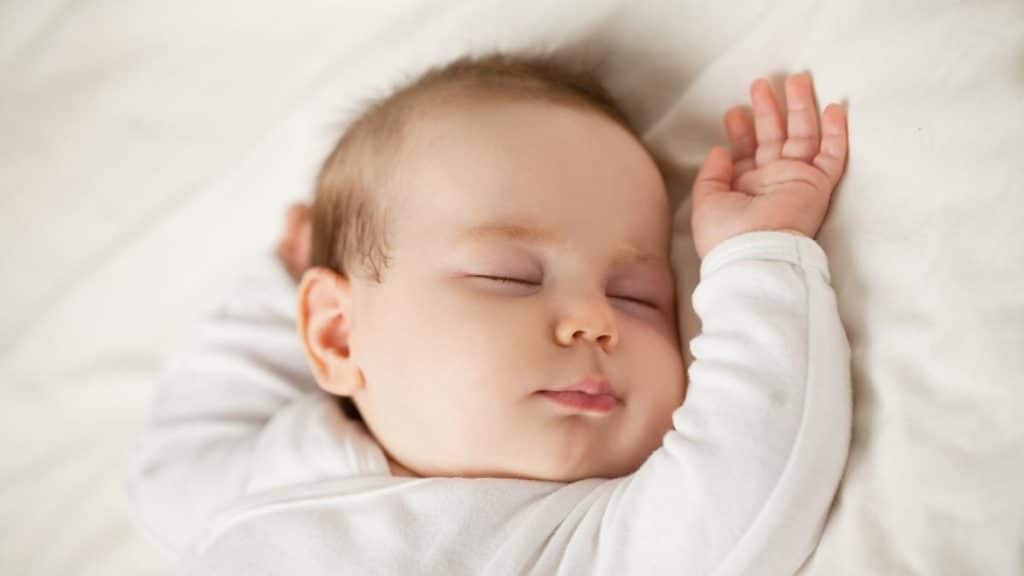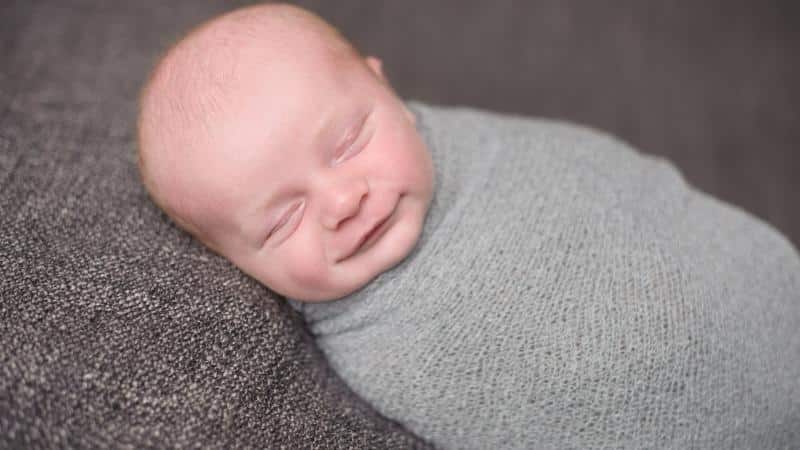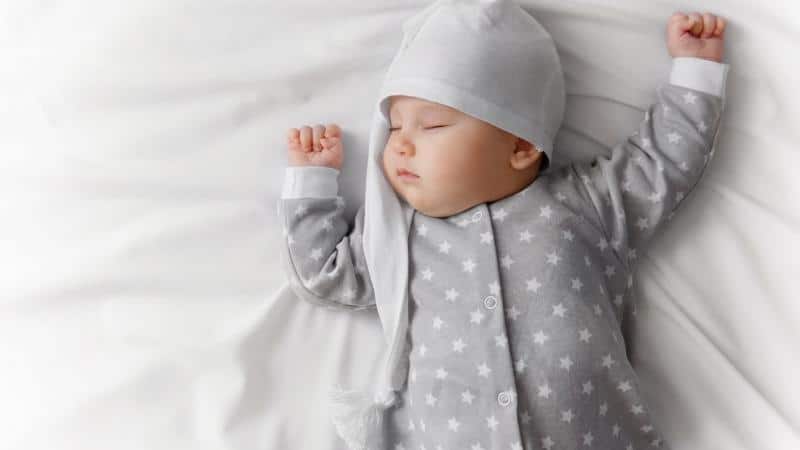Ensure that your child stays as warm as a bug after you have dressed them in warm and light layers. But you might have observed that sometimes your child’s hands and feet still feel cold.
Do you need to add layers? Babies don’t have the same body temperatures as adults, do they? Is your infant developing a disease?
Because they move less while sleeping, young babies tend to develop cold hands at night. Their hands and feet feel cooler than the rest of their body due to the typical reduction in activity, which results in less blood flow to those areas.
It’s vital to utilize your parental intuition while putting your baby to sleep to determine how many layers are ideal because every infant will feel and respond to the cold differently. For suggestions on what to dress your baby in at night based on their sleep temperature, consult our what to wear guide.
What Causes a Baby to Have Cold Hands?

Temperature regulation
Because your hands are warmer than your baby’s, they may feel colder than what they actually are. Although babies’ body temperatures are slightly higher than those of adults, their arms, hands, feet, and legs are typically still colder than yours. Anyone can be perplexed by this!
In essence, a baby’s body temperature at the core is higher than an adult’s. However, due to their small size, they are unable to control their temperature swiftly or heat themselves. Their hands, feet, arms, and legs don’t all receive an equal amount of heating.
This can sometimes result in a warm body and freezing hands and feet. Because of this, even in a warm home, newborns need to be dressed in one layer more than they feel comfortable in.
According to the American Academy of Pediatrics (AAP), a baby’s normal body temperature can range from 97°F (36.1°C) to 100.4°F (38°C).
Activity level
Being a baby requires a lot of feeding, sleeping, and digestion. Your kid won’t be moving or exerting themselves for much of the day if they sleep or just lounging around. Of course, for a baby, this is entirely natural and healthy. However, it might result in frigid hands.
Due to their regular inactivity, newborns’ limbs receive less blood supply (arms, legs, hands, and feet). A baby’s blood flow is diverted away from the hands and toward the active stomach and intestines because of frequent feedings and digestion.
Moving around will aid with hand and foot warming if your infant begins to spend more time awake playing and exploring.
Blood circulation
Blood not only transports oxygen throughout the body but also heat. Babies younger than three months old still have developed blood circulation systems. As a result, a baby’s hands and feet, which are the furthest from the heart, receive less blood (and heat).
The baby’s developing brain, lungs, and other organs are still in the process of development. Because of this, a lot of blood flow is directed into these crucial developing areas. The baby’s hands and feet have not yet received the additional blood.
Some neonates’ hands and feet have so little blood flow that they appear blue! The name of this extremely typical disorder is acrocyanosis. After a baby is born, it typically goes away within a few hours or days.
When older babies are briefly chilly, such as after a bath, outside, or at night, they can develop blue-looking cold hands or feet. Not to worry. This is typical and will fully disappear when the baby’s blood circulation system strengthens.
Fever
Your child may experience cold hands and feet if they have a fever, defined as any temperature over 100.4°F (38°C). This may occur because their immune system and new blood flow are occupied battling infections elsewhere in their bodies. The hands and feet might become cooler as a result of this.
As your baby’s body struggles to regulate a climbing fever, a fever can also cause chills and low temperatures.
How to Keep Your Baby’s Hands Warm at Night
Method 1: Using Mittens

With baby mittens, a fantastic technique to keep your baby warm at night. Cold hands and feet are a common issue during the winter.
By retaining heat, mittens can keep your baby’s hands and feet warm. To prevent irritation, make sure the mittens you purchase for your infant are made of soft, non-itchy material.
Method 2: Using Polyester Fleece Sleep Sacks
Putting your infant in a sleep sack is one technique to keep them warm at night. The materials used to make different types of sleep sacks vary. Sleep sacks made of polyester are a wonderful choice because they trap your baby’s body heat while sleeping.
Preemie through toddler sizes is available for sleep sacks. They also have long and short sleeves for various weather circumstances. So, when deciding for your infant, consider the sleep sacks carefully.
Method 3: Using A Sleeping Bag
You can also use a sleeping bag if you don’t want to use a sleep sack. Several materials are used to make sleeping bags, including cotton and polyester.
Using a sleeping sack is an excellent strategy to prevent chilly air drafts from escaping your baby’s room. You can pick a sleeping bag suitable for the season because they come in various weights.
Method 4: Using A Wearable Blanket
You can also use a wearable blanket if you don’t want to use a sleep sack or sleeping bag. A blanket that encircles your baby’s torso and fastens using snaps or Velcro is called a wearable blanket. Your baby’s body temperature can be maintained with this kind of blanket.
Additionally, it is most effective when used for conditions like SIDS, etc. It’s convenient for parents to care for their babies because they can easily cover the baby’s freezing hands and feet.
Method 5: Swaddling Your Baby

Swaddling is a common method for lulling infants to sleep. It entails covering your infant in a thin blanket and safely tucking its arms and legs.
Your infant can feel warm and safe by being swaddled. In order to aid them in getting a better night’s sleep, you can also place a hot water bottle on their feet.
Is Baby Too Cold if Hands Are Cold?
Generally speaking, it’s difficult to detect if your kid is too cold just by looking at their hands and feet. This is so that they may naturally carry a lower temperature since they are frequently exposed.
It’s not necessarily a sign that your kid is too cold if their hands and feet are cold. To measure more accurately, feel your baby’s torso.
Should I Cover Baby’s Hands at Night?
Temperature is not only the determinant of whether you should cover your baby’s hands at bedtime or not. It pertains to comfort. You can do it if you can cover them without running the risk of overheating.
In most situations, cold hands are a typical stage of your baby’s growth, therefore, it’s OK if you don’t.
Should I Put Gloves on my Baby at Night?
Because the science behind what is and is not OK for a baby in terms of sleep positions, crib contents, and wardrobe options is in almost continual motion, safe sleep recommendations might be a little challenging to understand.
Protective gloves are among the suggested sleepwear for infants by the National Sleep Foundation. According to the foundation’s website, soft gloves help eliminate the risk of newborns’ fingernails scratching their faces as they sleep.
But if a baby’s mitten inadvertently falls off their hand while sleeping, could that be more hazardous than a cut on their face?
Do Babies’ Hands and Arms Get Cold in Sleep Sacks?

Arms are often not considered when designing sleep sacks so your baby won’t become too hot. To prevent overheating, babies predominantly expel heat through their arms and heads. As long as your baby’s core temperature is warm, you don’t need to worry about colder arms and cold hands.
Will a Baby Cry if They Are Too Cold?
Your baby can cry due to the temperature. They could cry as a result of being excessively hot or cold. There are indications you may look for if the temperature is making your infant irritable.
Sweating, damp hair, heat rash, or clammy skin indicate the infant is overheating. Check the temperature of your baby’s ears, face, and stomach for any indications that they may be cold.
When Should Babies Stop Wearing Mittens at Night?
A smaller portion is for the thumb, while the other four fingers fit in the bigger portion. Both phrases have a protective function; hence they are frequently used interchangeably.
Numerous stores sell a wide range of infant products for teething, such as silicone and cotton mittens. Babies must wear them during the first several weeks or months to stay safe.
A baby’s nails may still be fragile and sensitive in the first few days after delivery, so parents must avoid cutting them. When you feel ready to start trimming those nails, you can now remove the mittens.
Before the baby reaches the age of six months, parents could elect to remove the mittens. As infants get older, their use of their hands increases in sensitivity.
